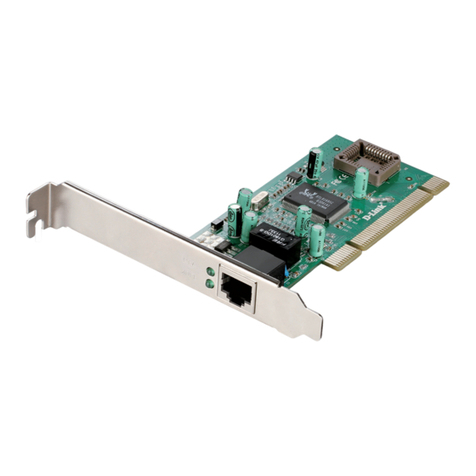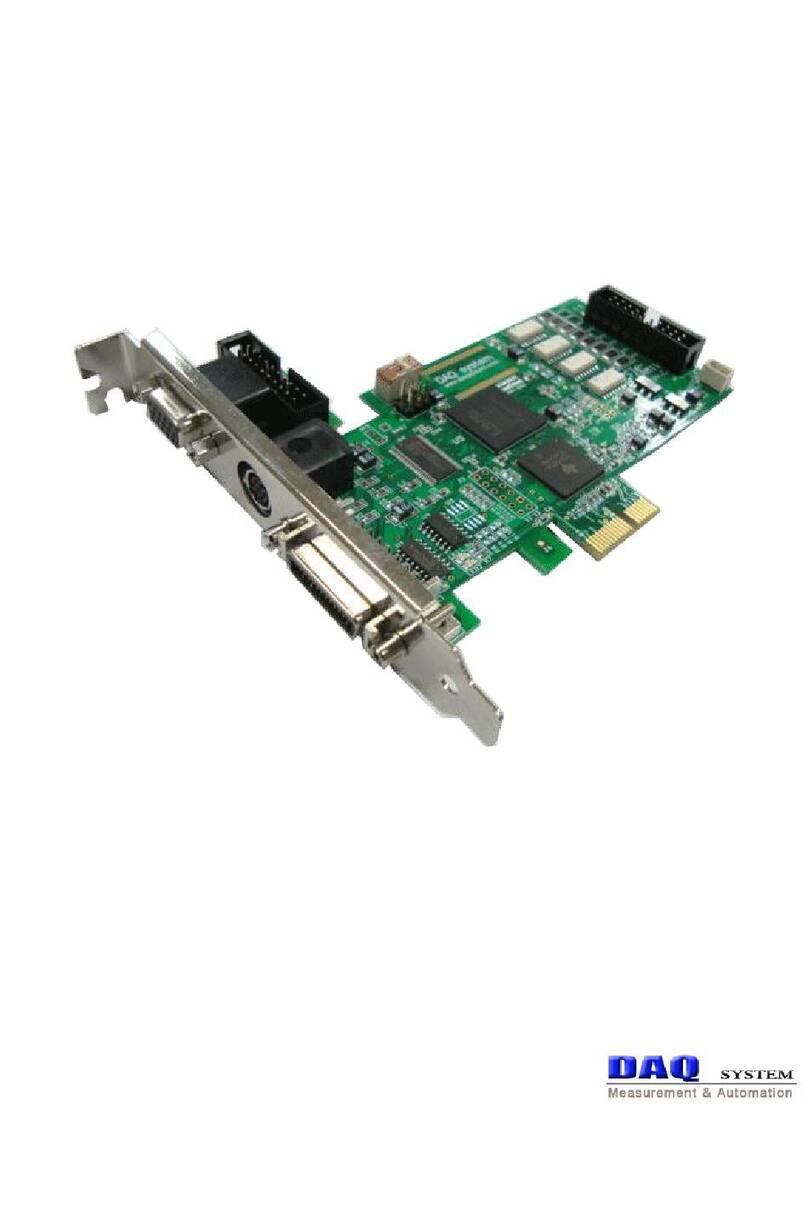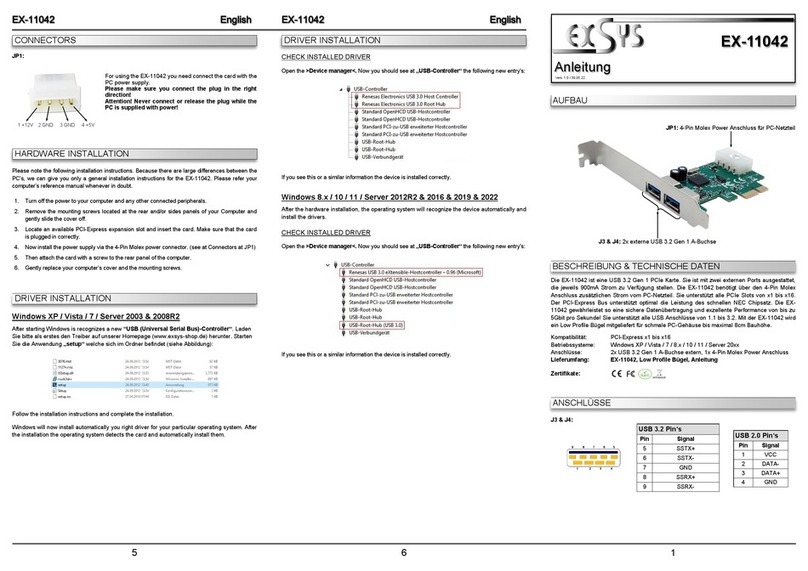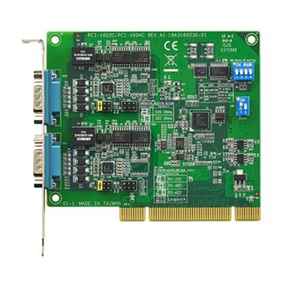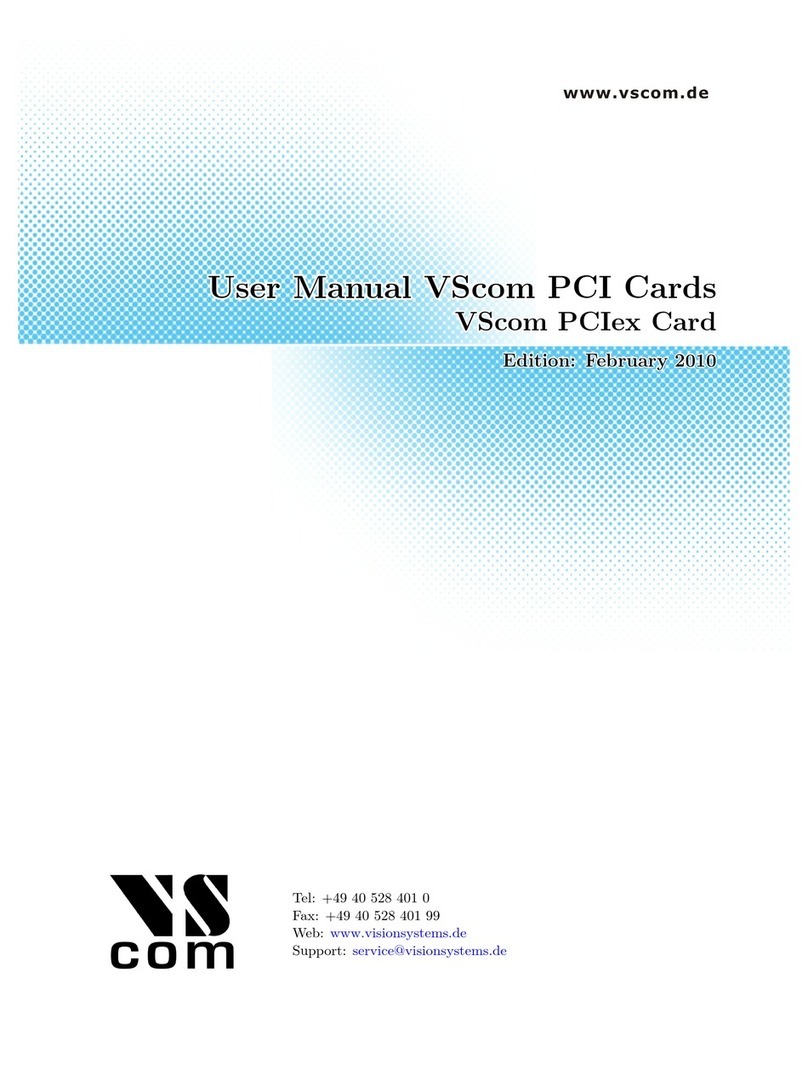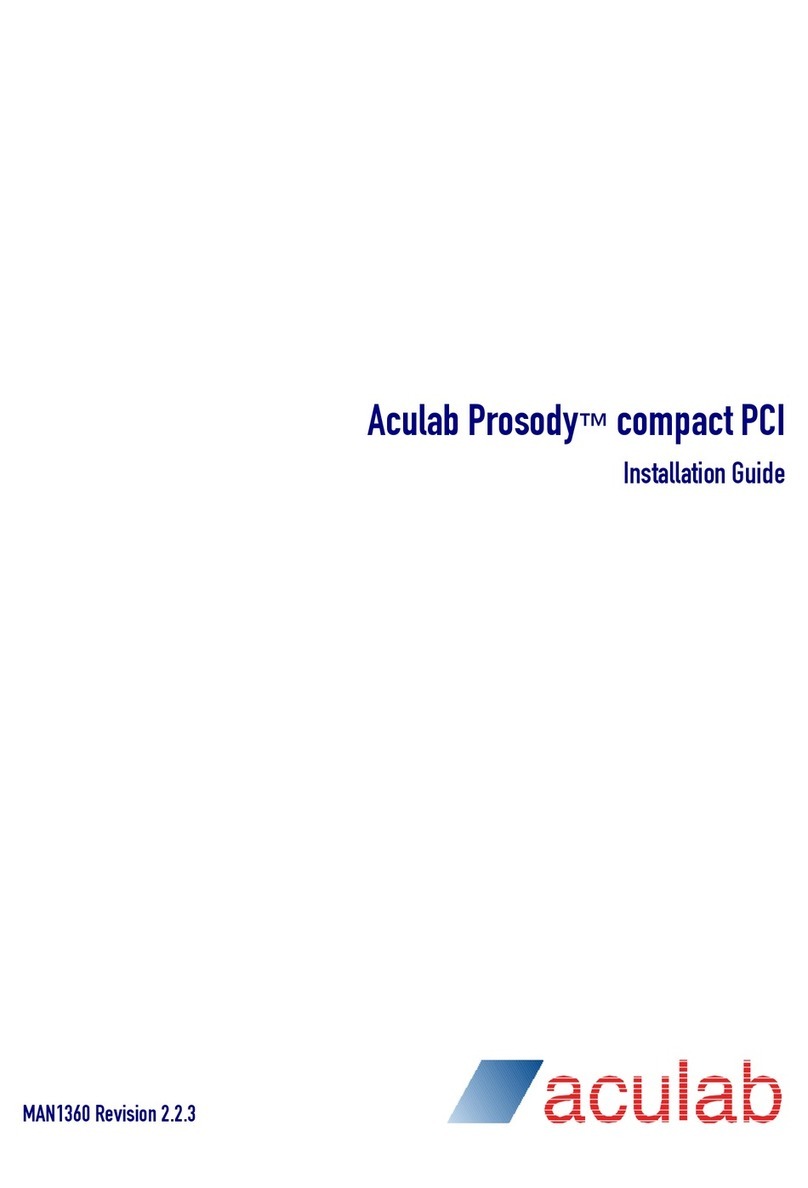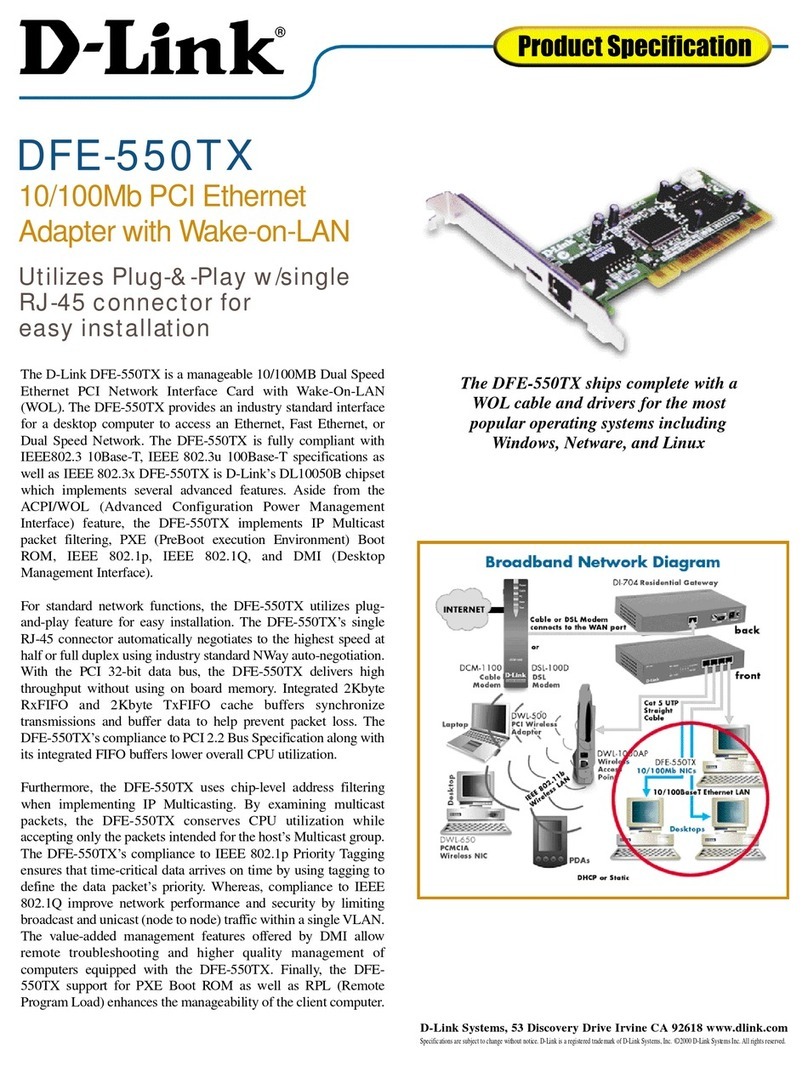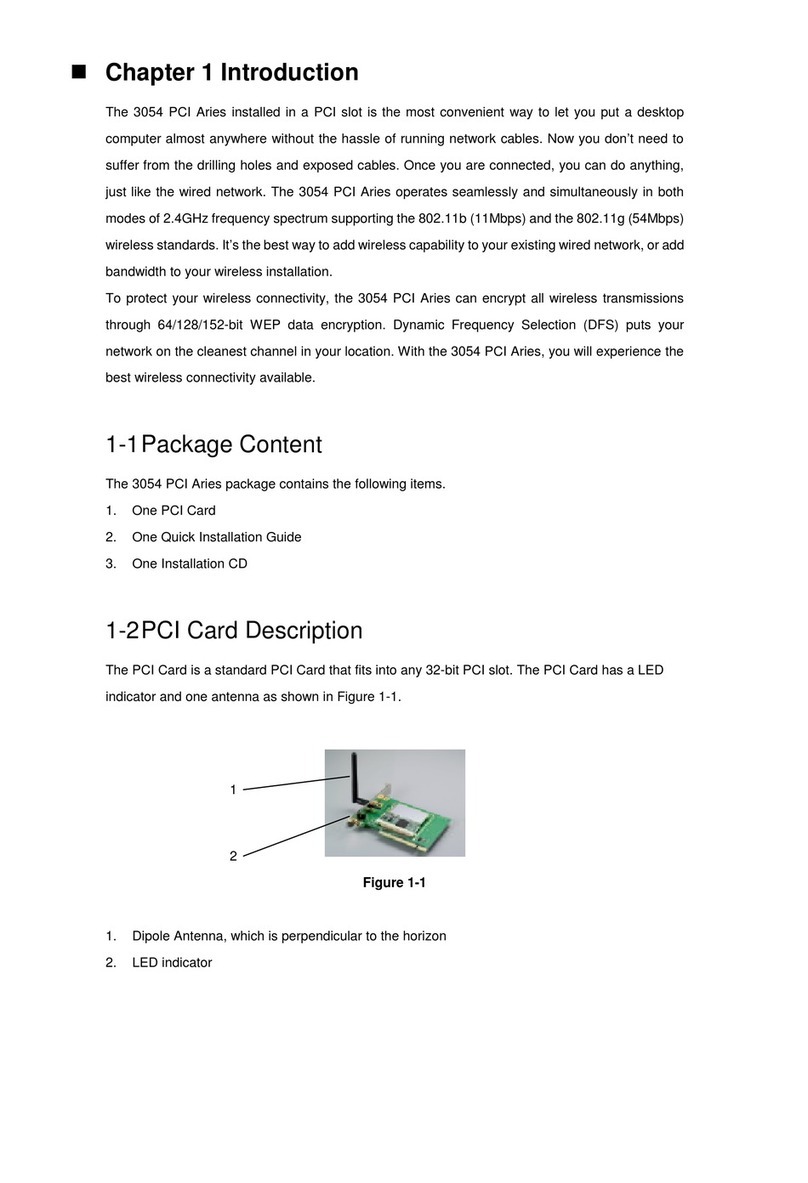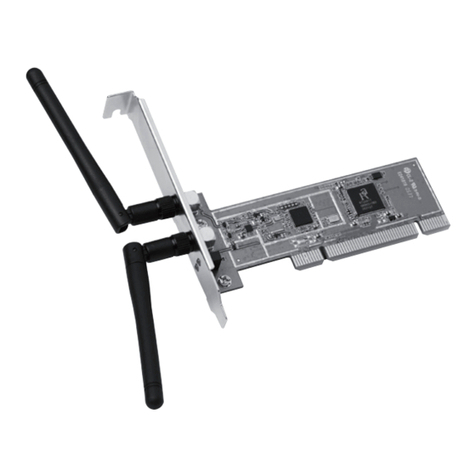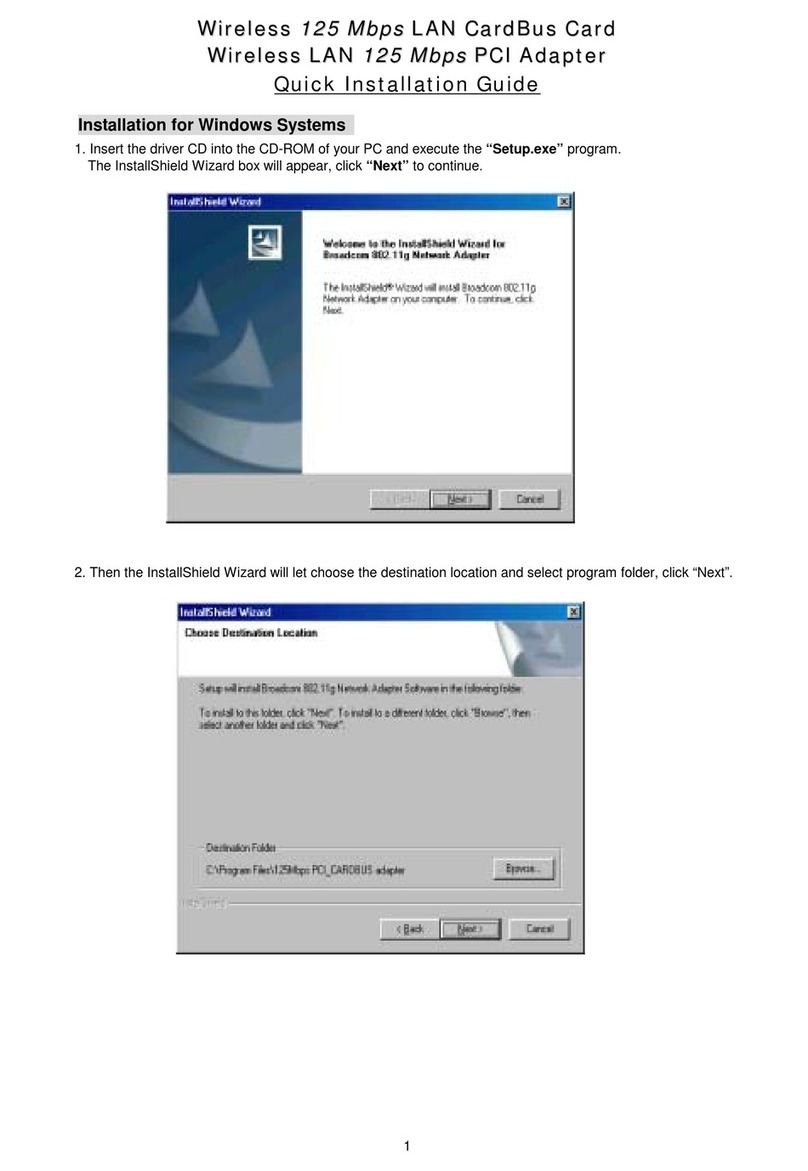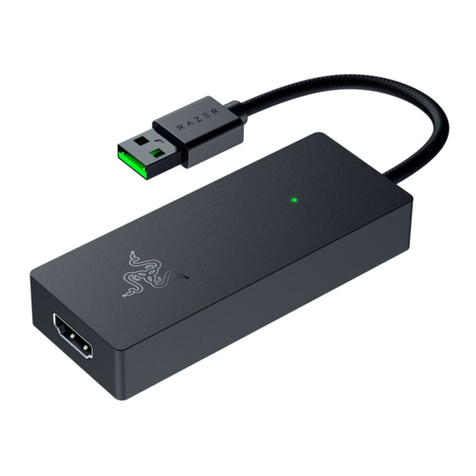Dawicontrol DC-2974 PCI User manual

DC-2974 PCI
PCI FAST SCSI2 Hostadapter
SCSI Hostadapter Kurzanleitung
Seite 3 - 10
SCSI Hostadapter Quick-Guide
Page 11 - 18
Brève notice de la carte d’extension SCSI
Pages 19 - 26
WW
WW
Windows 95indows 95
indows 95indows 95
indows 95TMTM
TMTM
TM/W/W
/W/W
/Windows 98indows 98
indows 98indows 98
indows 98TMTM
TMTM
TM/W/W
/W/W
/Windows 2000indows 2000
indows 2000indows 2000
indows 2000TMTM
TMTM
TM
WW
WW
Windows NTindows NT
indows NTindows NT
indows NTTMTM
TMTM
TM/W/W
/W/W
/Windows MEindows ME
indows MEindows ME
indows METMTM
TMTM
TM/W/W
/W/W
/Windows XPindows XP
indows XPindows XP
indows XPTMTM
TMTM
TM
DEUTSCHENGLISHFRANÇAIS

Kurzanleitung- 2 -
17. Auflage
© Copyright 1992 - 2003 by
DAWICONTROL GmbH
Postfach 1709
D-37007 Göttingen
HotLine: 0551 / 35000
Monday - Friday 9:00 - 17:00
Internet:www.dawicontrol.com
Alle Rechte weltweit vorbehalten, ins-
besondere das Recht des Nachdrucks
sowie der Übersetzung, auch einzelner
Textteile. Der gewerbliche Weiterver-
kauf bedarf der schriftlichen Zustim-
mung durch die Geschäftsleitung.
IBM, PC, XT, AT und OS/2 sind einge-
tragene Warenzeichen der Internatio-
nal Business Machines. MS-DOS und
MS-Windows sind eingetragene Wa-
renzeichen der Microsoft Inc. Novell
NetWare ist ein eingetragenes Waren-
zeichen der Novell Inc. Dawicontrol ist
eingetragenes Warenzeichen der
DawicontrolCom-putersysteme GmbH.
17th Edition
© Copyright 1992 - 2003 by
DAWICONTROL GmbH
P.o. Box 1709
D-37007 Göttingen
HotLine: +49 / 551 / 35000
Monday - Friday 9:00 - 17:00
Internet: www.dawicontrol.com
Allrights reservedworldwide, especially
the rights for the reproduction and
translation even of extracts only.
Commerical retailing only after prior
written management consent.
IBM,PC, XT,ATand OS/2areregistered
trademarks of International Business
Machines. MS-DOS and MS-Windows
are registered trademarks of Microsoft
Inc. Novell NetWare is a registered
trademark of Novell Inc. Dawicontrol is
registered trademark of Dawicontrol
Computersysteme GmbH.
17ème édition
© Copyright 1992 – 2003 by
DAWICONTROL GmbH
P.o. Box 1709
D-37007 Göttingen
HotLine: +49 / 551 / 35000
Lundi - Vendredi 9:00 - 17:00
Internet:www.dawicontrol.com
Tous droits réservés mondialement,
particulièrement le droit de reproduction
ainsi que le droit de traduction, même
seulement de passages du texte. La
revente commerciale nécessite l’accord
écrit préalable de la direction.
IBM, PC, XT, AT et OS/2 sont des
marques déposées de International
Business Machines. MS-DOS et MS-
Windows sont des marques déposées
de Microsoft Inc. Novell NetWare est
une marque déposée de Novell Inc.
Dawicontrol est une marque déposée
de Dawicontrol Computer-systeme
GmbH.

Kurzanleitung - 3 -
1. Voreinstellungen prüfen
Der SCSI Hostadapter DC-2974 PCI wurde werkseitig so konfiguriert, dass in
den meisten Fällen keine Änderung der Jumpereinstellung nötig sein wird. Dennoch
sollten Sie sich vor dem Einbau vergewissern, dass die Einstellung der Jumper mit der
empfohlenen Grundeinstellung übereinstimmt.
Skizze: DC-2974 PCI
Jumper J1 ROM-Aktivierung
aufgesteckt ROM aktiv
abgezogen ROM inaktiv
Das ROM enthält das SCSI-BIOS, welches für die Verwaltung von SCSI
Festplatten verantwortlich ist. Zwar ist es auch möglich, Festplatten mit Hilfe der
entsprechenden Treiber zu verwalten, die Installation durch das BIOS bietet jedoch die
höhere Kompatibilität zu den verschiedenen Betriebssystemen. Das BIOS installiert
alle angeschlossenen Festplatten in der Reihenfolge der SCSI-ID´s sowie Wechsel-
platten mit den SCSI-ID´s 0, 1 und 2. Weiterhin werden alle anderen angeschlossenen
Geräte angezeigt.
Wichtig: SCSI-Festplatten werden nicht im “Setup” des Computers angemeldet!
Jumper J2 SCSI Hostadapter Terminierung
kein Jumper aufgesteckt eingeschaltet
Position 1-2 ausgeschaltet
Position 2-3 automatisch (Voreinstellung)
Bei der automatischen Terminierung überprüft der SCSI Hostadapter selbsttä-
tig, ob sich an den internen und/oder externen Anschlüssen Geräte befinden und
schaltet die Terminatoren entsprechend ein oder aus. Diese Einstellung sollte nur
dann geändert werden, wenn sich in Sonderkonfigurationen Probleme ergeben.

Kurzanleitung- 4 -
2. Einbau
Zum Einbau des DC-2974 PCI SCSI Hostadapters müssen Sie das Gehäuse
IhresComputers öffnen;beachten Siein diesemZusammenhang die Gewährleistungs-
bedingungen des Herstellers. Vor dem Öffnen des Gehäuses in jedem Fall den
Computer ausschalten und den Netzstecker ziehen! Den DC-2974 PCI SCSI Host-
adapter können Sie in einem beliebigen freien "Busmaster"-fähigen 32 Bit PCI-Slot
installieren.
3. Anschluss von SCSI Geräten
Sie können bis zu 7 verschiedene SCSI-Geräte an den SCSI-Bus anschließen.
Jedes SCSI Gerät hat eine sogenannte “SCSI-ID”, eine Adresse, unter der das
betreffende Gerät Befehle entgegennehmen kann. Beachten Sie bitte, dass alle
angeschlossenen Geräte auf verschiedene IDs eingestellt sein müssen. Der DC-2974
PCI SCSI Hostadapter sucht sich die für Ihn benötigte SCSI-ID selbstständig.
4. SCSI-Bus Terminierung
Der SCSI-Bus muss zur fehlerfreien Signalübertragung an beiden Enden mit
sogenannten “Abschlusswiderständen” oder auch “Termination Resistors” versehen
werden. Aus diesem Grund müssen beim gleichzeitigen Anschluss von Geräten an zwei
SCSI Anschlüssen die auf dem DC-2974 PCI SCSI Hostadapter befindlichen aktiven
Terminatoren abgeschaltet werden. Wenn Sie die SCSI-Terminierung auf "automatisch"
gestellt haben, wird diese selbsttätig vom SCSI Hostadapter vorgenommen. Achten Sie
auch darauf, daß Sie ggf. bei gleichzeitigem Anschluss von mehreren Geräten an diesen
ebenfalls die Abschlusswiderstände entfernen müssen, sodass nur die am Ende der
Kabel angeschlossenen Geräte terminiert sind. Überprüfen Sie bei eventuellen Funk-
tionsstörungen zuerst, ob diese Vorraussetzungen erfüllt sind.
5. Installation unter Windows 95, 98, ME
5.1 Allgemeine Hinweise
Windows 95, 98, bzw.
Windows ME verfügen über
eine einheitliche SCSI-Schnitt-
stelle, welche die hardware-
spezifischen Anpassungen an
die verschiedenen SCSI
Hostadapter ermöglicht. Dies
wird durch den Treiber
“DC2974.MPD” im “\WIN95-
98” Verzeichnis Ihrer
Installationsdiskette vorge-
nommen. Die Steuerung des
Windows Installationspro-
gramms wird durch die Datei
“DC2974.INF” (ebenfalls im
“\WIN95-98” Verzeichnis) vor-
genommen.

Kurzanleitung - 5 -
Die für den Betrieb von CDROM oder Wechselplattenlaufwerken usw. erforder-
lichen Gerätetreiber sind bereits in Windows integriert, sodass die Installation durch
den von Windows vorgegebenen automatisierten Ablauf recht einfach ist.
Der SCSI-Hostadapter wird von Windows während des ersten Bootens automa-
tisch erkannt. Im Fenster "Neue Hardware gefunden" wählen Sie zur Installation
"Treiber auf Diskette des Hardwareherstellers". Wählen Sie anschließend “Durchsu-
chen” aus; die für die Installation notwendigen Dateien befinden sich im Verzeichnis
“\WIN95-98” Ihrer Installationsdiskette. Nachdem Sie das entsprechende Laufwerk
und Verzeichnis angegeben haben, erscheint ein Fenster mit der genauen Typ-
bezeichnung Ihres SCSI Hostadapters.
PCI SCSI Hostadapter werden automatisch vom PCI-BIOS konfiguriert, d. h.
dem SCSI Hostadapter wird ein freier Interrupt und eine freie I/O Adresse zugeordnet,
diese Einstellung kann im Gerätemanager nicht geändert werden.
Nach einem Neustart des Systems sind der SCSI Hostadapter sowie die daran
angeschlossenenSCSI Geräteim Windows Geräte-Manageraufgeführt. FallsWindows
Ihren SCSI Hostadapter bereits automatisch erkannt hat und einen entsprechenden
Treiber installiert hat, empfehlen wir Ihnen dennoch, die mitgelieferten Originaltreiber
zu verwenden. Öffnen Sie hierzu aus der Systemsteuerung heraus das Symbol
“System” und wählen Sie den Gerätemanager aus. Von da aus öffnen Sie das Symbol
für den installierten SCSI Hostadapter. Wählen Sie anschließend die Rubrik “Treiber”
aus. Sie können jetzt die Originaltreiber durch die Option “Anderer Treiber” bzw.
"Treiber aktualisieren" aktivieren.
5.2 Übersicht der Aufrufparameter von DC2974.MPD
Wenn Sie die Power Save Funktion nutzen möchten oder sich in Sonder-
konfigurationen Probleme ergeben sollten, können Sie mithilfe des Gerätemanagers
unter “Einstellungen” folgende Parameter an den SCSI-Treiber übergeben:
/PS=.. gibt die Dauer (in Minuten) an, nach der inaktive Laufwerke abgeschal-
tet werden sollen.
/LUN Durch diesen Parameter wird die Unterstützung von mehreren LUN´s
(Logical Units) eines Gerätes aktiviert. Da die meisten SCSI-Geräte
jedoch nur über eine LUN 0 verfügen, ist dieser Parameter nur in
Sonderfällen nötig. Bei Hostadaptern mit SCSI-Setup wird dieser
Parameter ignoriert und stattdessen die Einstellung aus dem Setup
übernommen.
/ID=x x = SCSI ID des Hostadapters. Wird dieser Parameter nicht angegeben,
so wird die SCSI ID des Hostadapters automatisch bestimmt. Als SCSI-
ID ist ein Wert zwischen 0..7 zulässig.
/*SN=.. gibt die Target-ID’s an, bei denen die Windows-Gerätemanager-Ein-
stellung für Synchronen/Asynchronen Datentransfer ignoriert werden
soll, d.h. in dem Fall übernimmt das SCSI Gerät die Steuerung. Bei
Hostadaptern mit SCSI-Setup wird dieser Parameter ignoriert und
stattdessen die Einstellung aus dem Setup übernommen.

Kurzanleitung- 6 -
/!SN=x,..,x Hiermit werden die Geräte bestimmt, die nicht synchron, sondern
asynchron betrieben werden sollen, unabhängig von der Windows
Einstellung für dieses Gerät. Bei Hostadaptern mit SCSI-Setup wird
dieser Parameter ignoriert und stattdessen die Einstellung aus dem
Setup übernommen.
/SN=x,..,x Durch diesen Parameter werden die Geräte angegeben, die unabhän-
gig von der Windows Einstellung im synchronen Datentransfer Modus
betrieben werden sollen, sofern dies von den betroffenen Geräten
unterstützt wird. Zum Beispiel werden durch die Angabe "/SN=1,4" die
Geräte mit den SCSI ID´s 1 und 4 im synchronen Modus betrieben. Bei
Hostadaptern mit SCSI-Setup wird dieser Parameter ignoriert und
stattdessen die Einstellung aus dem Setup übernommen.
/!DISC=x,..,x gibt die Geräte an, bei denen die Windows Geräte-Manager-Einstel-
lung für "Trennen" übergangen wird, und damit diese Funktion nicht
mehr zur Verfügung steht.
6. Installation unter Windows 2000, Windows XP
6.1. Allgemeine Hinweise
Windows 2000/XP
verfügt über eine einheitli-
che SCSI-Schnittstelle,
welche die hardware-
spezifischen Anpassungen
an die verschiedenen SCSI
Hostadapter ermöglicht.
Dies wird durch den Trei-
ber “DC2974.SYS” im
“\WIN2000” Verzeichnis Ih-
rerInstallationsdiskette vor-
genommen. Die Steuerung
des Windows 2000/XP
Installationsprogramms
wird durch die Datei
“DC2974.INF”(ebenfalls im
“\WIN2000” Verzeichnis)
vorgenommen.
Die für den Betrieb von CDROM oder Wechselplattenlaufwerken usw. erforder-
lichen Gerätetreiber sind bereits in Windows 2000/XP integriert, sodass die Installa-
tion durch den von Windows 2000/XP vorgegebenen automatisierten Ablauf recht
einfach ist. Windows 2000/XP erkennt ihren SCSI Hostadapter automatisch und
installiert einen passenden Standard-Windows Treiber. Um den mitgelieferten oder
einen aktuelleren Treiber aus dem Internet zu installieren, öffnen Sie aus der
Systemsteuerung heraus das Symbol “System” (für XP in der "klassischen Ansicht")
und wählen Sie die Rubrik “Hardware” aus.

Kurzanleitung - 7 -
Klicken Sie anschließend “Geräte-Manager” an und wählen Sie den SCSI
Hostadapter unter dem Abschnitt SCSI- und RAID-Controller aus. Unter der Rubrik
Treiber wählen Sie "Treiber aktualisieren..." aus, daraufhin startet der Assistent zum
Aktualisieren von Gerätetreibern. Folgen Sie bitte den Anweisungen auf dem Bild-
schirm; die für die Installation notwendigen Dateien befinden sich im Verzeichnis
“\WIN2000” Ihrer Installationsdiskette. Nachdem Sie das entsprechende Laufwerk
und Verzeichnis angegeben haben, erscheint ein Fenster mit der genauen Typ-
bezeichnung Ihres SCSI Hostadapters.
PCI SCSI Hostadapter werden automatisch vom PCI-BIOS konfiguriert, d. h.
dem SCSI Hostadapter wird eine freier Interrupt und eine freie I/O Adresse zugeord-
net, diese Einstellung kann im Gerätemanager nicht geändert werden.
Nach einem Neustart des Systems sind der SCSI Hostadapter sowie die daran
angeschlossenen SCSI Geräte im Windows Geräte-Manager aufgeführt.
6.2. Übersicht der Aufrufparameter von DC2974.SYS
Wenn Sie die Power Save Funktion nutzen möchten oder sich in Sonder-
konfigurationen Probleme ergeben, können Sie verschiedene Parameter an den
SCSI-Treiber übergeben.
Rufen Sie dazu das Programm “REGEDT32” auf. Die Parameter für SCSI
Adapter erreichen Sie, indem Sie nacheinander “HKEY_LOCAL_MACHINE”,
“SYSTEM”, “CurrentControlSet” und “Services” öffnen. Von da aus öffnen Sie
“DC2974”, dann "Parameter" und wählen “Device” aus. Auf der rechten Bildschirm-
hälfte erscheint daraufhin ein Eintrag mit der Bezeichnung “DriverParameter” und den
momentanen Einstellungen.
Durch Mausklick auf “DriverParameter” können Sie ein Fenster zur Änderung
der Parameter öffnen.
/PS=.. gibt die Dauer (in Minuten) an, nach der inaktive Laufwerke abgeschal-
tet werden sollen.
/ID=x x = SCSI ID des Hostadapters. Wird dieser Parameter nicht angegeben,
so wird die SCSI ID des Hostadapters automatisch bestimmt. Als SCSI-
ID ist ein Wert zwischen 0..7 zulässig. Bei Hostadaptern mit SCSI-
Setup wird dieser Parameter ignoriert und stattdessen die Einstellung
aus dem Setup übernommen.
/LUN Durch diesen Parameter wird die Unterstützung von mehreren LUN´s
(Logical Units) eines Gerätes aktiviert. Da die meisten SCSI-Geräte
jedoch nur über eine LUN 0 verfügen, ist dieser Parameter nur in
Sonderfällen nötig. Bei Hostadaptern mit SCSI-Setup wird dieser
Parameter ignoriert und stattdessen die Einstellung aus dem Setup
übernommen.
/*SN=.. gibt die Target-ID’s an, bei denen die Windows-Gerätemanager Ein-
stellung für Synchronen/Asynchronen Datentransfer ignoriert werden
soll, d.h. in dem Fall übernimmt das SCSI Gerät die Steuerung. Bei
Hostadaptern mit SCSI-Setup wird dieser Parameter ignoriert und
stattdessen die Einstellung aus dem Setup übernommen.

Kurzanleitung- 8 -
/!SN=x,..,x Hiermit werden die Geräte bestimmt, die nicht synchron, sondern
asynchron betrieben werden sollen, unabhängig von der Windows
Einstellung für dieses Gerät. Bei Hostadaptern mit SCSI-Setup wird
dieser Parameter ignoriert und stattdessen die Einstellung aus dem
Setup übernommen.
/SN=x,..,x Durch diesen Parameter werden die Geräte angegeben, die unabhän-
gig von der Windows Einstellung im synchronen Datentransfer Modus
betrieben werden sollen, sofern dies von den betroffenen Geräten
unterstützt wird. Zum Beispiel werden durch die Angabe "/SN=1,4" die
Geräte mit den SCSI ID´s 1 und 4 im synchronen Modus betrieben. Bei
Hostadaptern mit SCSI-Setup wird dieser Parameter ignoriert und
stattdessen die Einstellung aus dem Setup übernommen.
/!DISC=x,..,x gibt die Geräte an, bei denen die Windows Geräte-Manager-Einstel-
lung für "Trennen" übergangen wird, und damit diese Funktion nicht
mehr zur Verfügung steht.
7. Installation unter Windows NT
7.1 Allgemeine Hinweise
Windows NT verfügt über eine einheitliche SCSI-Schnittstelle, welche die
hardwarespezifischen Anpassungen an die verschiedenen SCSI Hostadapter er-
möglicht. Dies wird durch den Treiber “DC2974.SYS” im “\WINNT” Verzeichnis Ihrer
Installationsdiskette vorgenommen. Die für den Betrieb von CDROM oder Wechsel-
plattenlaufwerken usw. erforderlichen Gerätetreiber sind bereits in Windows NT
integriert, sodass die Installation durch den von Windows NT vorgegebenen automa-
tisierten Ablauf recht einfach ist. Bei Windows NT muss zwischen zwei Installations-
arten unterschieden werden:
- Die Installation des SCSI Hostadapters während der Windows NT Installation,
dies ist dann der Fall, wenn an Ihren SCSI Hostadapter die Boot-Festplatte oder
das CDROM Laufwerk mit der Windows NT Installations-CD angeschlossen ist.
- Die nachträgliche Installation des SCSI Hostadapters bei einem bereits installier-
ten Windows NT System. Sie können diese Installationsart auch bei der Erst-
installation von Windows NT wählen, wenn die am SCSI Hostadapter angeschlos-
senen Geräte für die Installation nicht benötigt werden.
7.2 Installation während der Windows NT Installation
Nehmen Sie die Installation von Windows NT zunächst wie beschrieben vor und
halten Ihre SCSI Treiberdiskette bereit. Falls Sie nicht Ihre Originaldiskette verwen-
den, beachten Sie bitte, dass sich die Datei “TXTSETUP.OEM” im Hauptverzeichnis
sowie die weiteren Windows NT Dateien im Verzeichnis “\WINNT” befinden müssen.
Im Laufe der Windows NT Installation wird die Einrichtung weiterer SCSI Hostadapter
angeboten, legen Sie nach Aufforderung Ihre SCSI Treiberdiskette in das Laufwerk A:
ein. Das Setup Programm zeigt Ihnen daraufhin die genaue Bezeichnung Ihres SCSI
Hostadapters an und bittet Sie nochmals um Bestätigung durch die ENTER-Taste;
anschließend wird Ihr SCSI Hostadapter installiert.

Kurzanleitung - 9 -
7.3 Nachträgliche Installation
Rufen Sie von der Windows Systemsteuerung “SCSI Adapter” auf und wählen
Sie die Rubrik "Treiber". Von hier aus betätigen Sie die Schaltfläche "hinzufügen" und
anschließend "Diskette": Sie werden daraufhin aufgefordert, die SCSI Treiberdiskette
in ein Laufwerk einzulegen und das entsprechende Verzeichnis anzugeben. Wenn Sie
Ihre Originaldiskette verwenden, befinden sich die zur Installation notwendigen
Dateien im Verzeichnis “\WINNT”.
Wenn Laufwerk und Verzeichnis richtig eingegeben worden sind, wird die
Installation Ihres SCSI Hostadapters anschließend automatisch vorgenommen. Falls
Windows NT Ihren SCSI Hostadapter bereits automatisch erkannt hat und einen
entsprechenden Treiber installiert hat, empfehlen wir Ihnen dennoch, die mitge-
lieferten Originaltreiber zu verwenden. In diesem Fall müssen Sie noch an dieser Stelle
den bereits installierten Treiber entfernen, indem Sie den Treiber auswählen und die
Schaltfläche "entfernen" betätigen. Um auf die angeschlossenen Geräte zuzugreifen,
müssen Sie Windows NT anschließend erneut starten.
7.4 Übersicht der Aufrufparameter von DC2974.SYS
Wenn Sie die Power Save Funktion nutzen möchten oder sich in Sonder-
konfigurationen Probleme ergeben, können Sie verschiedene Parameter an den
SCSI-Treiber übergeben.
Rufen Sie dazu das Programm “REGEDT32” auf. Die Parameter für SCSI
Adapter erreichen Sie, indem Sie nacheinander “HKEY_LOCAL_ MACHINE”,
“SYSTEM”, “CurrentControlSet” und “Services” öffnen. Von da aus öffnen Sie
“DC2974”, dann "Parameter" und wählen “Device” aus. Auf der rechten Bildschirm-
hälfte erscheint daraufhin ein Eintrag mit der Bezeichnung “Driver Parameter” und den
momentanen Ein stellungen. Durch Mausklick auf “DriverParameter” können Sie ein
Fenster zur Änderung der Parameter öffnen.
Folgende Parameter werden unter WindowsNT unterstützt:
/ID=x x = SCSI ID des Hostadapters. Wird dieser Parameter nicht angegeben,
so wird die SCSI ID des Hostadapters automatisch bestimmt. Als SCSI-
ID ist ein Wert zwischen 0..7 zulässig.
/LUN Durch diesen Parameter wird die Unterstützung von mehreren LUN´s
(Logical Units) eines Gerätes aktiviert. Da die meisten SCSI-Geräte
jedoch nur über eine LUN 0 verfügen, ist dieser Parameter nur in
Sonderfällen nötig. Bei Hostadaptern mit SCSI-Setup wird dieser
Parameter ignoriert und stattdessen die Einstellung aus dem Setup
übernommen.
/*SN=.. gibt die Target-ID’s an, bei denen die Windows Einstellung für Syn-
chronen/Asynchronen Datentransfer ignoriert werden soll, d.h. in dem
Fall übernimmt das SCSI Gerät die Steuerung. Bei Hostadaptern mit
SCSI-Setup wird dieser Parameter ignoriert und stattdessen die Ein-
stellung aus dem Setup übernommen.

Kurzanleitung- 10 -
/!SN=x,..,x Hiermit werden die Geräte bestimmt, die nicht synchron, sondern
asynchron betrieben werden sollen, unabhängig von der Windows
Einstellung für dieses Gerät. Bei Hostadaptern mit SCSI-Setup wird
dieser Parameter ignoriert und stattdessen die Einstellung aus dem
Setup übernommen.
/PS=.. gibt die Dauer (in Minuten) an, nach der inaktive Laufwerke abgeschal-
tet werden sollen.
/SN=x,..,x Durch diesen Parameter werden die Geräte angegeben, die unabhän-
gig von der Windows Einstellung im synchronen Datentransfer Modus
betrieben werden sollen, sofern dies von den betroffenen Geräten
unterstützt wird. Zum Beispiel werden durch die Angabe "/SN=1,4" die
Geräte mit den SCSI ID´s 1 und 4 im synchronen Modus betrieben. Bei
Hostadaptern mit SCSI-Setup wird dieser Parameter ignoriert und
stattdessen die Einstellung aus dem Setup übernommen.
/!DISC=x,..,x gibt die Geräte an, bei denen die Windows Geräte-Manager-Einstel-
lung für "Trennen" übergangen wird, und damit diese Funktion nicht
mehr zur Verfügung steht.

Quick Guide - 11 -
1. Reviewing Defaults
The factory settings of SCSI hostadapter DC-2974 PCI were chosen to make
changing the jumper settings unnecessary in most cases. Yet prior to installation you
should verify that the actual jumper settings correspond to the recommended defaults.
Figure: DC-2974 PCI
Jumper J1 ROM enable
set ROM enabled
no jumper set ROM disabled
The ROM contains the SCSI-BIOS which is responsible for SCSI hard disk
management. Although it may be possible to use the appropriate drivers for hard disk
management,BIOS installation provides better compatibilitywith thedifferent operating
systems. The BIOS installs all connected hard disks in the order of their SCSI-IDs and
removable hard disks of SCSI-IDs 0, 1 and 2. All other connected devices are also
displayed.
Important: SCSI disks are not included in the computer’s Setup routine!
Jumper J2 SCSI hostadapter termination
no jumper set ON
position 1-2 OFF
position 2-3 automatic (default)
Automatic termination means that the SCSI hostadapter automatically checks
whether any devices are connected to the internal and/or external devices and enables
or disables the terminators accordingly. We recommend only changing this setting if
problem arise from special configurations.
2. Installation

Quick Guide- 12 -
You will have to open your computer to install the DC-2974 PCI SCSI
hostadapter. Please note the relevant manufacturer's guarantee terms. Switch off and
unplug the computer before you ever open the casing! Plug the DC-2974 PCI SCSI
hostadapter into any free 32-bit "bus master" PCI slot.
3. Connecting SCSI Devices
You can connect up to 7 different SCSI devices to theSCSI bus. Every SCSI
device is assigned its own SCSI-ID which is an address where commands destined
for the relevant device are to be sent to. Please make sure to set a different ID for every
connected device. DC-2974 PCI SCSI Host Aadapter automatically finds the SCSI-
ID it needs.
4. SCSI Bus Termination
To ensure trouble-free signal transfer, both ends of the SCSI bus are to be
connected to so-called Termination Resistors. Therefore it is mandatory to disable the
active terminators on the DC-2974 PCI SCSI hostadapter when you connect devices
to two connectors of the hostadapter at the same time. If you have chosen Automatic
SCSI termination the SCSI hostadapter takes care of termination automatically.
Please note that you have to disable the termination as you connect more than one
device, until only the last device at the SCSI bus has to be terminated. Always check
compliance with these conditions first if any functional defects occur.
5. Installation under Windows 95, 98, ME
5.1 General Information
Windows 95, 98 as well as Windows ME have a built-in standardised SCSI
interface that allows you
to adapt your specific
hardware to the different
SCSI host-adapters.
Hardware adaptation is
done by driver
„DC2974.MPD“ located
in the „\WIN95-98“
directory on your
installation diskette. The
file „DC2974.INF“ (also
stored in the „\WIN95-
98“ directory) controls
the Windows Installer.
The device drivers
required for running CD-
ROM or removable disk
drives etc. are part of

Quick Guide - 13 -
the Windows operating system providing an automatic setup procedure which much
facilitates the installation process.
Windows will recognize your SCSI hostadapter automatically during the first
booting.In the dialog "new hardware found" you have to chose for installation "driver
on producers disc". Then select the "Browse" option; the installation files are located
in the „\WIN95-98“ directory on your installation diskette. When you have specified the
drive and folder, Windows displays a dialog indicating the exact type and name of your
SCSI hostadapter.
PCI SCSI hostadapters are automatically configured by the PCI BIOS, i.e. the
SCSI hostadapter is assigned a free interrupt and a free I/O address which cannot be
changed via Windows’ Device Manager.
After PC restart the SCSI hostadapter and all SCSI devices connected to it will
be listed in Windows’ Device Manager. Should Windows have recognized your SCSI
hostadapter and installed the appropriate driver auto-matically, we still recommend
using the driver contained in the hostadapter package. Start Control Panel, double-
click the System icon, choose Device Manager, and select the icon representing the
installed SCSI hostadapter. Then activate the Drivers tab and choose the Other Driver
or Updated Driver option to install the original driver delivered on diskette.
5.2 Summary of DC2974.MPD Command Line Switches
If you wish to use the Power Save function or if any problems are caused by
customised configurations, you can add the following switches to the SCSI driver by
means of the options provided on the Settings tab in Windows’ Device Manager:
/PS=.. Specifies the interval (in minutes) after which inactive drives are to be
switched off
/LUN This parameter enables the device’s support of several LUNs (Logical
Units). However, most SCSI devices only have LUN 0 available to them
so that you will need this parameter only for special cases. Host-
adapters supplied with a SCSI setup ignore this parameter and use the
setup settings instead.
/ID=x x = SCSI ID of the hostadapter. The SCSI-ID of the host adapter will be
set automatically if this parameter is not specified. Valid SCSI-ID values
are 0 to 7.
/*SN=.. Specifies the Target-IDs for which the synchronous/asynchronous data
transfer settings of Windows’ Device Manager are to be ignored, i.e. for
which control is be given to the SCSI device. Hostadapters supplied with
a SCSI setup ignore this parameter and use the setup settings instead.
/!SN=x,..,x This parameter defines the devices that are to run in asynchronous
instead of in synchronous mode even if the device tries to switch into

Quick Guide- 14 -
synchronous mode. Hostadapters supplied with a SCSI setup ignore
this parameter and use the setup settings instead.
/SN=x,..,x This parameter specifies the devices to be operated in Synchronous
Data Transfer mode if this mode is supported by these devices,
independent of the Windows settings. Entering „/SN=1,4“, for example,
enables the synchronous mode for SCSI-IDs 1 and 4. Hostadapters
supplied with a SCSI setup ignore this parameter and use the setup
settings instead.
/!DISC=x,..,x Specifies the devices for which the "disconnect" settings of the Windows
device manager are to be ignored and with it this function is not
available.
6. Installation under Windows 2000, Windows XP
6.1. General Information
Windows 2000/XP has a built-in standardised SCSI interface that allows you to
adapt your specific hardware to the different SCSI host-adapters. Hardware adaptation
is done by driver
“DC2974.SYS” located
in the “\WIN2000”
directory on your
installation diskette.
The file "DC2974.INF"
(also stored in the
"\WIN2000" directory)
controls the Windows
2000/XP Installer.
The device
drivers required for
running CD-ROM or
removable disk drives
etc. are part of the
Windows 2000/XP
operating system
providing an automatic setup procedure which much facilitates the installation
process. Windows 2000/XP recognizes your SCSI hostadapter automatically and
installs a suitable standard Windows driver. To install the delivered driver or a current
one from the Internet, open the symbol "System" (XP: switch to "classic view) in the
control panel and choose the category "Hardware".
Then click the "Device Manager" and choose the SCSI hostadapter under the
section SCSI and RAID controller. Choose "Driver Update" under the catagory
"Drivers". The assistent starts to update the device drivers. Please follow the

Quick Guide - 15 -
instructions on the screen. The necessary files for the installation are located in the
"\WIN2000" directory of your installation diskette. After you have determined the
corresponding drive and directory, a window with the exact model description of your
SCSI hostadapter appears.
PCI SCSI hostadapters are automatically configured by the PCI BIOS, i.e. the
SCSI hostadapter is assigned a free interrupt and a free I/O address which cannot be
changed via Windows’ Device Manager.
After PC restart the SCSI hostadapter and all SCSI devices connected to it will
be listed in Windows' Device Manager.
6.2. Summary of DC2974.SYS Command Line Switches
If you wish to use the Power Save function or if any problems are caused by
customized configurations, you can add the following switches to the SCSI driver by
means of the options provided on the Settings tab in Windows' Device Manager:
Start the "REGEDT32" program. Display the SCSI adapter parameters by
opening "HKEY_LOCAL_MACHINE", "SYSTEM", "CurrentControlSet", and "Ser-
vices" in that sequence. Then choose "DC2974", "Parameters" and select "Device". A
"DriverParameter" entry listing the current settings will be displayed on the right panel.
Click on "DriverParameter" to open a dialog that allows you to change the
parameter settings.
/PS=.. Specifies the interval (in minutes) after which inactive drives are to be
switched off.
/ID=x x = SCSI ID of the hostadapter. The SCSI-ID of the host adapter will be
set automatically if this parameter is not specified. Valid SCSI-ID values
are 0 to 7. Hostadapters supplied with a SCSI setup ignore this
parameter and use the setup settings instead.
/LUN This parameter enables the device's support of several LUNs (Logical
Units). However, most SCSI devices only have LUN 0 available to them
so that you will need this parameter only for special cases. Host-
adapters supplied with a SCSI setup ignore this parameter and use the
setup settings instead.
/*SN=.. Specifies the Target-IDs for which the synchronous/asynchronous data
transfer settings of Windows' Device Manager are to be ignored, i.e. for
which control is be given to the SCSI device. Hostadapters supplied with
a SCSI setup ignore this parameter and use the setup settings instead.
/!SN=x,..,x This parameter defines the devices that are to run in asynchronous
instead of in synchronous mode even if the device tries to switch into
synchronous mode. Hostadapters supplied with a SCSI setup ignore
this parameter and use the setup settings instead.

Quick Guide- 16 -
/SN=x,..,x This parameter specifies the devices to be operated in Synchronous
Data Transfer mode if this mode is supported by these devices,
independent of the Windows settings. Entering "/SN=1,4", for example,
enables the synchronous mode for SCSI-IDs 1 and 4. Hostadapters
supplied with a SCSI setup ignore this parameter and use the setup
settings instead.
/!DISC=x,..,x Specifies the devices for which the "disconnect" settings of the
Windows device manager are to be ignored and with it this function is
not available.
7. Installation under Windows NT
7 .1 General Information
Windows NT has a built-in standardised SCSI interface that allows you to adapt
your specific hardware to the different SCSI hostadapters. Hardware adaptation is
done by driver „DC2974.SYS“ located in the „\WINNT95“ directory on your installation
diskette. The device drivers required for running CD-ROM or removable disk drives
etc. are part of the Windows NT operating system providing an automatic setup
procedure which much facilitates the installation process. Windows NT differentiates
between two installation methods:
- SCSI hostadapter installation during installation of Windows NT. This method is
deployed when the boot disk or the CD-ROM drive containing the Windows NT
installation CD is connected to your SCSI hostadapter.
- Separate installation of your SCSI hostadapter on a fully configured Windows NT
system. You can choose this installation method also when first installing
Windows NT if the devices connected to your SCSI hostadapter are not required
for installation.
7.2 Installation During Windows NT Installation
First install Windows NT as described in the manual and keep your SCSI driver
diskette ready. Should you not work with the original diskette make sure that the disk
you are using contains the file TXTSETUP.OEM in the root directory and all other
Windows NT file in the „\WINNT“ subdirectory. In the course of Windows NT
installation the installer gives you the option to set up additional SCSI hostadapters.
Insert your SCSI driver diskette into drive A: when prompted for it. The setup program
displays the exact name and type of your SCSI hostadapter and asks you to press
ENTER to confirm the information. Afterwards it installs your SCSI hostadapter.
7.3 Separate Installation
Run the SCSI Adapter utility from Windows' Control Panel and activate the
Drivers tab. On this tab first click on Add and then on Diskette. You will then be

Quick Guide - 17 -
requested to insert the driver disk into the drive and specify the appropriate directory.
If you are using the original driver diskette, the files required for installation are located
in the "\WINNT" subdirectory.
If the specified drive and directory are not correct, Windows will default to
automatic installation of your SCSI hostadapter. Should Windows NT have recognized
your SCSI hostadapter and installed the appropriate driver automatically, we still
recommend using the driver contained in the host adapter package. In this case you
would have to uninstall the driver at this point by selecting the driver and clicking on
the Delete button. Restart Windows NT so that you can access the connected devices.
7.4 Summary of DC2974.SYS Command Line Switches
If you wish to use the Power Save function or if any problems are caused by
customised configurations, you can add the following switches to the SCSI driver
Start the "REGEDT32" program. Display the SCSI adapter parameters by
opening HKEY_LOCAL_MACHINE, SYSTEM, CurrentControlSet, and Services in
that sequence. Then choose "DC2974" and select Device. A DriverParameter entry
listing the current settings will be displayed on the right panel. Click on DriverParameter
to open a dialog that allows you to change the parameter settings.
The following parameters are supported by Windows NT:
/ID=x x = SCSI ID of the hostadapter. The SCSI-ID of the hostadapter will be set
automatically if this parameter is not specified. Valid SCSI-ID values are
0 to 7. Hostadapters supplied with a SCSI setup ignore this parameter and
use the setup settings instead.
/LUN This parameter enables the device's support of several LUNs (Logical
Units). However, most SCSI devices only have LUN 0 available to them
so that you will need this parameter only for special cases. Hostadapters
supplied with a SCSI setup ignore this parameter and use the setup
settings instead.
/*SN=.. Specifies the Target-IDs for which the synchronous/asynchronous data
transfer settings of Windows' Device Manager are to be ignored, i.e. for
which control is be given to the SCSI device. Hostadapters supplied with
a SCSI setup ignore this parameter and use the setup settings instead.
/!SN=x,..,x This parameter defines the devices that are to run in asynchronous
instead of in synchronous mode, independent of the Windows mode

Quick Guide- 18 -
setting for these devices. Hostadapters supplied with a SCSI setup
ignore this parameter and use the setup settings instead.
/PS=.. Specifies the interval (in minutes) after which inactive drives are to be
switched off.
/SN=x,..,x This parameter specifies the devices to be operated in Synchronous
Data Transfer mode if this mode is supported by these devices,
independent of the Windows settings. Entering "/SN=1,4", for example,
enables the synchronous mode for SCSI-IDs 1 and 4. Hostadapters
supplied with a SCSI setup ignore this parameter and use the setup
settings instead.
/!DISC=x,..,x Specifies the devices for which the "disconnect" settings of the
Windows device manager are to be ignored and with it this function is
not available.

Brève notice - 19 -
1. Vérifier les prépositionnements
La carte d’extension SCSI DC-2974 PCI a été configurée à l’usine de manière
à ne pas avoir besoin, dans la plupart des cas, de modifier le positionnement des
ponts. Il faut pourtant s’assurer avant l’encastrement que le positionnement des ponts
concorde bien avec le positionnement de base recommandé.
Croquis: DC-2974 PCI
Pont J1 Activation ROM
enfiché ROM actif
retiré ROM inactif
La mémoire morte ROM contient le BIOS SCSI qui est responsable de
l’administration des disques durs SCSI. Il est bien possible d’administrer des disques
durs à l’aide des pilotes correspondants, mais l’installation par BIOS offre cependant
une plus grande compatibilité aux différents systèmes d’exploitation. BIOS installe
tous les disques durs raccordés dans l’ordre des ID SCSI ainsi que les disques
amovibles ayant les ID SCSI 0, 1 et 2. De plus il y a affichage de tous les autres
appareils raccordés.
Important: les disques durs SCSI ne sont pas annoncés au „setup“ de l’ordinateur!
Pont J2 assignation carte d’extension SCSI
pas de pont d’enfiché branché
position 1-2 debranché
position 2-3 automatique (prépositionnement)
En assignation automatique, la carte d’extension SCSI vérifie s’il se trouve des
appareils aux raccords internes et/ou externes et branche ou débranche les caractères
d’arrêt en conséquence. Ne changer ce positionnement qu’en cas d’apparition
den’effectue le contrôle problèmes dans les configurations spéciales.

Brève notice- 20 -
2. Encastrement
Il faut ouvrir le boîtier de l’ordinateur pour encastrer la carte SCSI d’extension
DC-2974 PCI; bien respecter à cet effet les conditions de garantie du fabricant. Bien
débrancher en tout cas l’ordinateur et retirer la fiche de la prise de courant avant
d’ouvrir le boîtier! La carte SCSI d’extension DC-2974 PCI peut s’installer dans
n’importe quel logement PCI libre apte à ”busmaster” 32 bits.
3. Raccordement d’appareils SCSI
Vous pouvez raccorder jusqu’à 7 appareils SCSI différents au bus interne SCSI.
Chaque appareil SCSI dispose d’une adresse ”SCSI-ID” lui permettant de capter les
ordres concernant l’appareil lui-même. Bien veiller à régler impérativement le
raccordement de tous les appareils à des IDs différentes les unes des autres. La carte
SCSI d’extension DC-2974 PCI cherche elle-même l’ID SCSI dont elle a besoin.
4. Assignation du bus SCSI
Il faut pourvoir le bus SCSI de résistances dites ”de fermeture” ou de ”termination
resistors” aux deux bouts pour une transmission parfaite. Il faut donc assigner le
dernier appareil à un câble interne, la carte SCSI d’extension DC-2974 PCI ayant été
assignée dès l’usine. Veiller aussi à retirer les résistances de fermeture aux différents
appareils en cas de raccordement simultané de plusieurs appareils pour ne laisser de
résistance de fermeture disponible qu‘à l’appareil raccordé en bout du câble. Vérifier
en cas de perturbations éventuelles au fonctionnement si toutes ces conditions
préalables sont bien remplies.
5. Installation sous Windows 95, 98, ME
5.1 Informations générales
Windows dispose d’une
interface SCSI universelle qui
permet des adaptations
spécifiques au matériel des
différentes cartes d’extension
SCSI. Cela est effectué par le
pilote «DC2974.MPD» dans
le sommaire «\WIN95-98» de
votre disquette d’installation.
La commande du programme
d’installation sous Windows
est effectuée par le fichier
«DC2974.INF» (également
dans le sommaire «\WIN95-
98»).
Table of contents
Languages:
Other Dawicontrol PCI Card manuals
